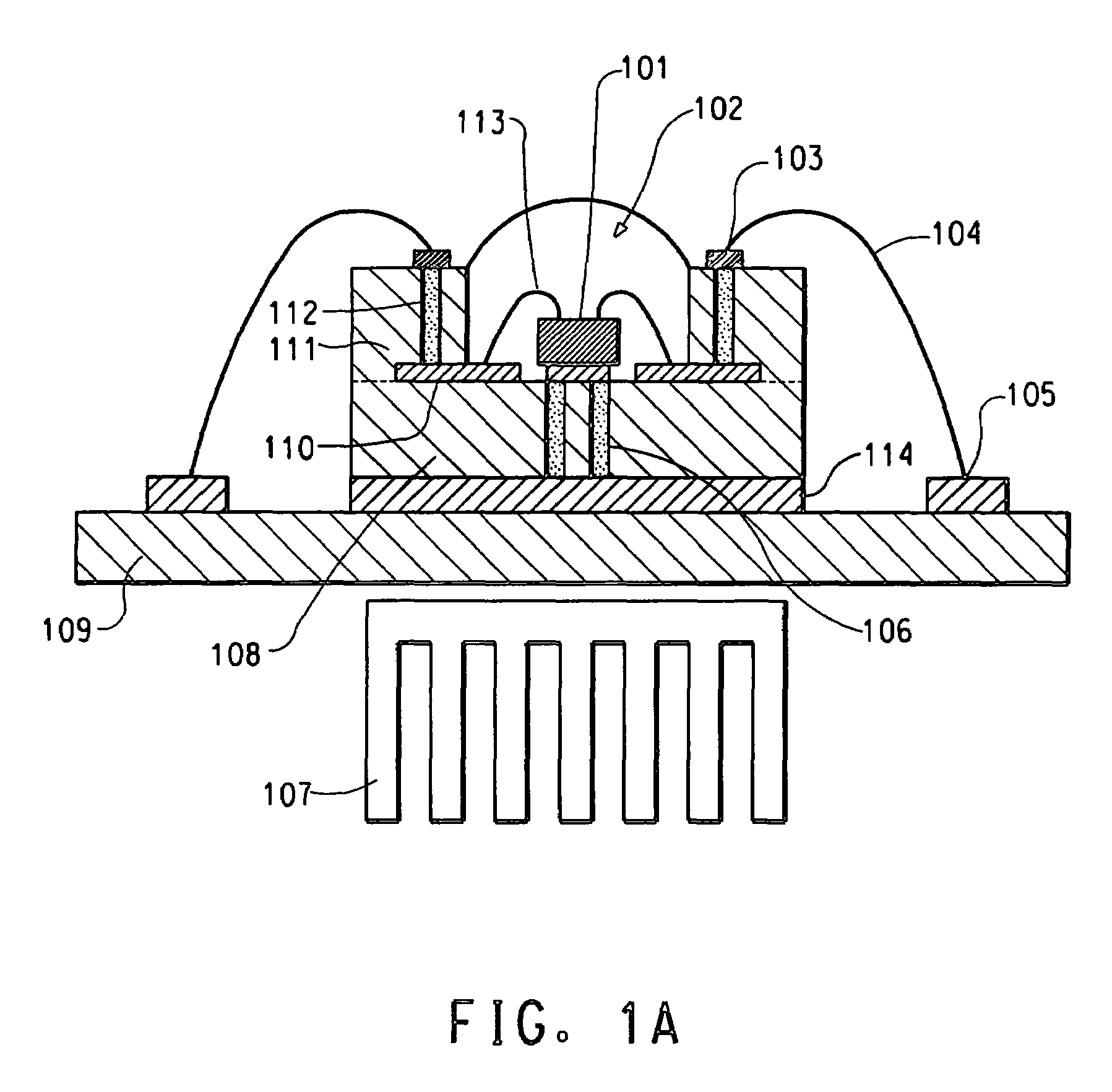Low temperature co-fired ceramic (LTCC) tape compositions, light emitting diode (LED) modules, lighting devices and method of forming thereof
a co-fired ceramic and low temperature technology, applied in the field of low temperature co-fired ceramic (ltcc) tape compositions, can solve the problems of long device life, cost, and no prior art leds provide for the use of ltcc technology or the benefits,
- Summary
- Abstract
- Description
- Claims
- Application Information
AI Technical Summary
Benefits of technology
Problems solved by technology
Method used
Image
Examples
example 1
[0110]A four layer LTCC laminate was prepared using the following materials:
[0111]Tape 1, as described above in Table 2 and with the inorganic powder containing 64 volume percent of a glass with the composition in weight percent of glass #5 in Table 1 and 36 volume percent Al2O3. It is noted that the glass #5 contains 17.20 weight % lead oxide. By weight % of the total inorganic composition, glass #5 or alumina is respectively, 55.44%, or 44.56%. It is further noted that inorganic pigments providing white color can also be used to substitute a portion of the alumina, as described in Tape 2 to enhance the light reflectivity of the upper portion of the resultant LTCC chip carrier. The green thickness was 10 mils or 254 micrometers.
[0112]After lamination the parts were placed on setters and fired in a conveyer furnace with an air atmosphere where the temperature was increased from room temperature to 850° C. and held for 18 minutes and then allowed to cool back to room temperature the ...
example 2
[0113]A four layer LTCC laminate was prepared using the following materials:
[0114]Tape 2, as described above in Table 2 and with the inorganic powder containing 64 volume percent of a glass with the composition in weight percent of glass #5 and 36 volume percent of Al2O3 and TiO2 at a ratio of 10 to 1. By weight % of the total inorganic composition, glass #5, alumina, ortitania, is respectively, 55.44%, 40.10%, or 4.46%. The green thickness was 10 mils or 254 micrometers.
[0115]After lamination the parts were placed on setters and fired in a conveyer furnace with an air atmosphere where the temperature was increased from room temperature to 850° C. and held for 18 minutes and then allowed to cool back to room temperature the whole process taking approximately 3 hours and 30 minutes. The fired part was fully densified and free from camber.
example 3
[0116]A four layer LTCC laminate was prepared using the following materials:
[0117]Tape 3, as described above in Table 2 and with the inorganic powder containing 68.7 volume percent of a glass with the composition in weight percent of glass #17 and 31.3 volume percent of Al2O3, glass #17, The weight % composition of frit or alumina is respectively, 58.51%, or 41.49%. The green thickness was 10 mils or 254 micrometers.
[0118]After lamination the parts were placed on setters and fired in a conveyer furnace with an air atmosphere where the temperature was increased from room temperature to 850° C. and held for 18 minutes and then allowed to cool back to room temperature the whole process taking approximately 3 hours and 30 minutes. The fired part was fully densified and free from camber.
[0119]The % light reflection the above blank LTCC substrate at red (650 nm), green (510 nm), or blue (475 nm) light wavelength is, respectively, 82.1%, 81.1% or 80.9% when measuring the top surface of the...
PUM
| Property | Measurement | Unit |
|---|---|---|
| weight percent | aaaaa | aaaaa |
| weight percent | aaaaa | aaaaa |
| flexural strength | aaaaa | aaaaa |
Abstract
Description
Claims
Application Information
 Login to View More
Login to View More - R&D
- Intellectual Property
- Life Sciences
- Materials
- Tech Scout
- Unparalleled Data Quality
- Higher Quality Content
- 60% Fewer Hallucinations
Browse by: Latest US Patents, China's latest patents, Technical Efficacy Thesaurus, Application Domain, Technology Topic, Popular Technical Reports.
© 2025 PatSnap. All rights reserved.Legal|Privacy policy|Modern Slavery Act Transparency Statement|Sitemap|About US| Contact US: help@patsnap.com



